Product Featured
Model: Pioneer DJ DDJ-FLX10Release Price: $1,599 (contact by livechat, phone or email for discount)
Released: March 23, 2023
This Pioneer DJ DDJ-FLX10 review was produced by David Michael at The Passionate DJ Podcast.
[/alert]Introduction
The DDJ-FLX10 is the new four-channel flagship DJ controller from Pioneer DJ for both rekordbox and Serato. Virtual DJ has also announced plug-and-play compatibility with the device, putting it right in trend with the other FLX devices.
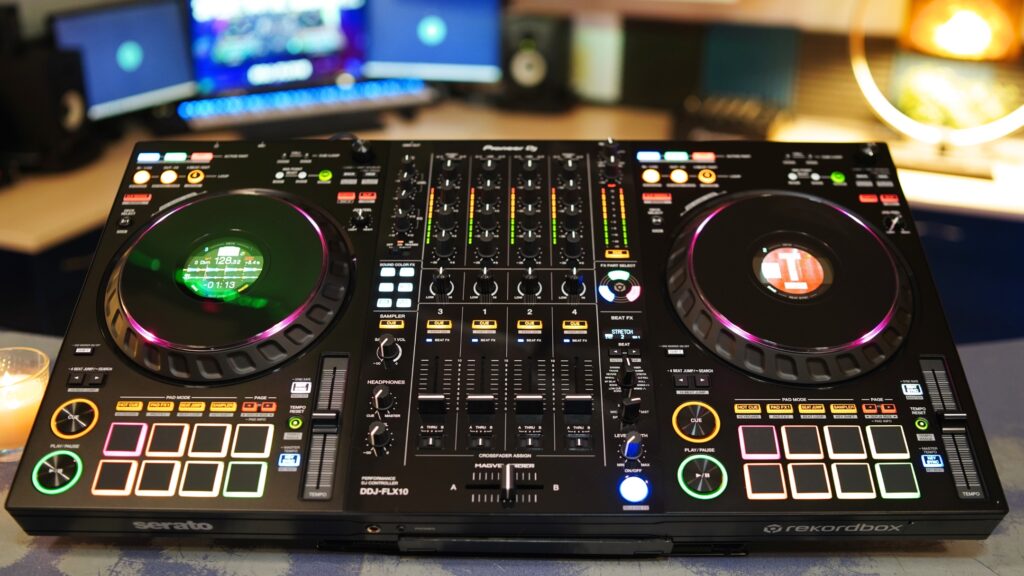
It features new Track Separation technology which focuses on three track elements: vocals, drums, and other instruments. You might be used to hearing the word “Stems” for these separated track elements, but Pioneer refers to them as Parts. Since Serato has four stem elements, it will combine melody and bass into the “Instruments” Part when using this controller. For each Part, you can mute or adjust the volume, apply FX, or send to a new deck from exactly the same point.
The on-jog displays are improved over the DDJ-1000, with 4 new display modes showing different types of waveform information:
• Deck Info Mode: shows information about the deck and the overall waveform.
• Waveform Mode: shows zoomed waveforms for both decks, and will be in tri-band color when using rekordbox
• Artwork Display: shows track artwork for what’s playing
• DJ Logo Display: shows your own logo or image which can be uploaded to the device using the Image Transfer Tool.
The FLX10 introduces Mix Point Link: a feature that automatically plays the next track exactly when you specify. Pioneer says this enables you to create a slick musical progression in your sets by linking mix points in tracks so the next song kicks in at the perfect moment. You might set the next track to start from the beginning of its melody when the vocal of the current song ends, ensuring a seamless transition without a sound clash.
The onboard DMX output lets you directly control lighting equipment without a separate interface or software. Just connect DMX-compatible lighting equipment to the controller and use rekordbox to create custom lighting effects, or set the software to automatically adapt the color and movement of the lights to progress with the music.
The Magvel Fader has been upgraded for improved precision. It’s been moved to a 4-sensor system, which allows you to make the tiniest volume adjustments, no matter how small the crossfader movement. It also features multi-colored jog rings, which indicate which Parts are playing on that deck
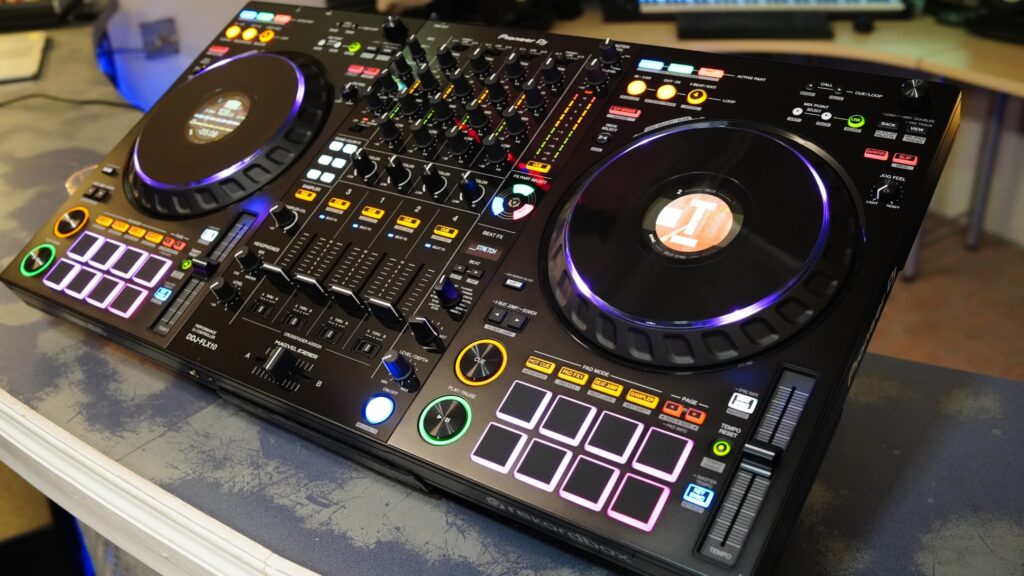
First Impressions
The layout is exactly what you expect from a modern “club-style” DJ controller. In fact, it pretty closely mimics the DDJ-1000, with the addition of a few new features. All the knobs and faders feel appropriately heavy. Overall, all the inputs felt very solid and professional. The jog displays are fairly high-res and display good color. The pads feel premium, and the jog wheels are some of the nicest I’ve encountered on a DJ controller. Not quite a CDJ-3000, but close.
There are a number of Beat FX to choose from, and a selection of six single-knob Color FX (including a low and hi-pass filter). The Magvel Fader has been improved with added precision, which means it should be up to the task of scratching should you choose to do so.
Track Separation
The FLX10 has several clever implementations of Track Separation or so-called “Stems” technology. Remember, Pioneer DJ is calling each separated piece of a song a “Part”.
First, there’s Active Part & Part Iso. Active Part means you’re literally selecting which Parts of the song are active. They’re all on by default, but what if I want to, say, remove the drums? Just hit the button and, like magic, they’ve disappeared. Part Iso lets you do the same thing, but you can control the volume of the individual Parts. The EQ knobs instead convert into knobs to control these parts. This is pretty neat, but does keep you from using your EQ when this feature is active.
The next feature is called FX Part Select. As you might guess from the name, it lets you select which Part to apply FX to. And I bet it won’t take long for your imagination to run wild with cool ways that this can be used. For instance, applying a slip roll or echo to only the vocals on a track. See the video above for an example.
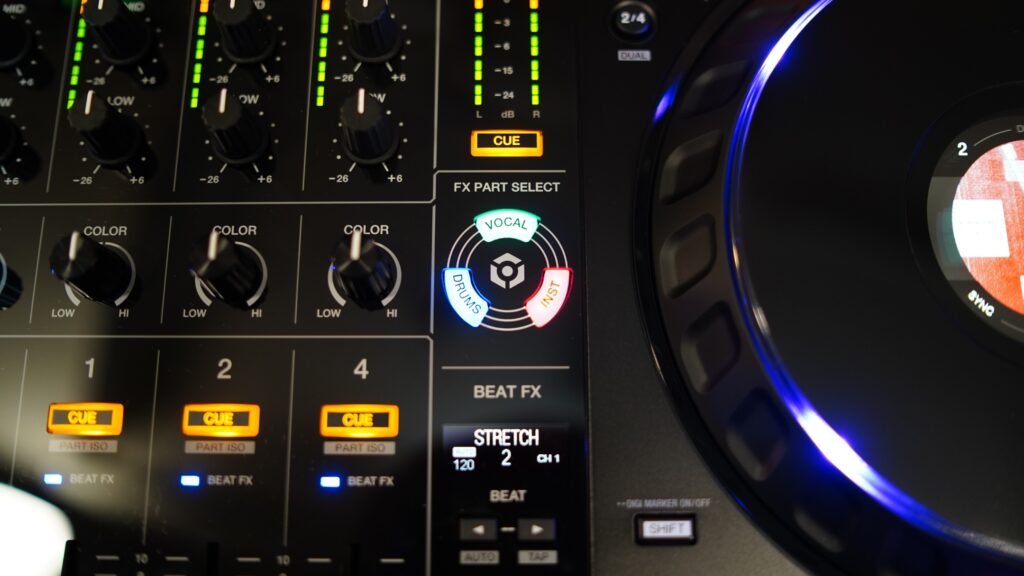
Finally, there’s Part Instant Doubles. This works just like the regular Instant Doubles feature, which instantly duplicates your track in another track and plays from the same position. Only this time, isolates a specific part in that deck. So, you could bump just the vocals out to its own deck, and then scratch or apply FX only to the vocals.
Track Separation, or “Stems”, currently sounds better on Serato and Virtual DJ than it does within Rekordbox (again, demonstrations in the video above). They are functional in Rekordbox, but nowhere near as clean as the other two, at least as of the writing of this review
Ports & Connections
First off, you’ll be happy to know that it has all the important professional audio hookups you’d want from something in this price point. Namely, both XLR and RCA outputs balanced 1/4″ booth outputs, and full support for mixing external devices. By the way, a common complaint of the DDJ-1000 was its weak phono preamps, but I’m happy to report that in my testing with vinyl records, the signal was nice and hot.
It’s powered by an external 12V power brick, so no IEC cable here. But, you do get two balanced mic inputs and not only is the FLX10 dual USB, but it’s dual USB-C. It’s nice to see that DJ companies are fully embracing the standard that other industries already have, so I’m happy with this choice.
And finally, there’s the onboard DMX port. This lets you connect into a DMX lighting network and run it using Rekordbox lighting. I’m no expert on Rekordbox lighting, and it’s a bit convoluted. But, in a day or so, I was able to put together a pretty sweet demo which you can also see in the video above
.
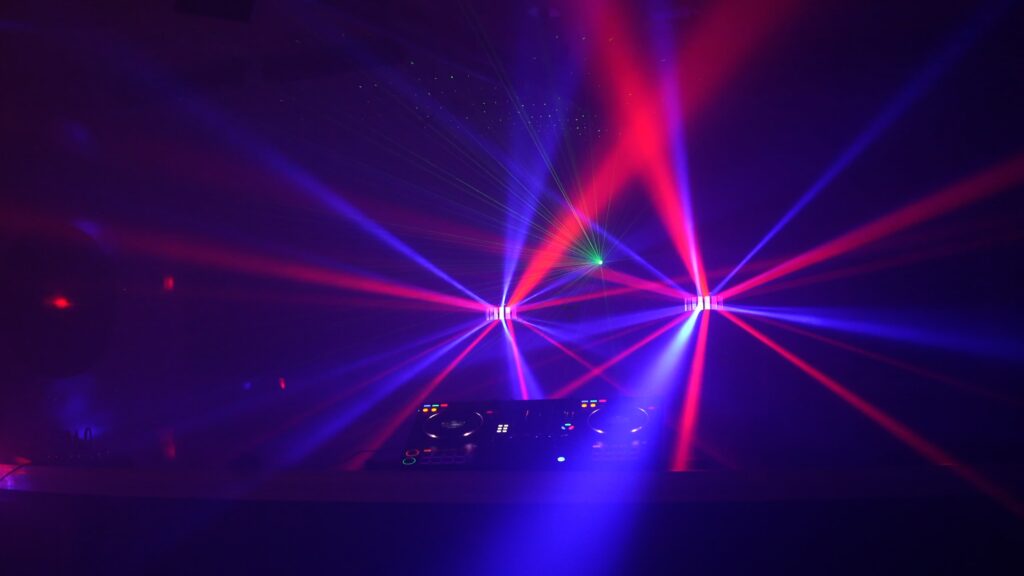
Final Thoughts
The FLX10 is certainly a worthy successor to the DDJ-1000. But, is it worth the cost of an upgrade if you already have one of those? Only if you’re interested in Track Separation… otherwise you’d be paying for wasted features. But if that’s something you want to get into, and you’re otherwise happy with the way your DDJ-1000 works, it’s absolutely an upgrade worth considering.
What about this vs. the competition? My gut instinct is to say if you’re more interested in Rekordbox, get this. If you’re more interested in Serato, get the RANE Four.
There are some limitations of using this in non-rekordbox software. For example, you don’t get Mix Point Link. That’s not something I think I plan on using myself, but worth noting. The pads aren’t labeled correctly for Serato, there’s only one jog display mode, and you don’t get DVS support unless you own Serato Suite. Outside of this, the Serato integration is fairly tight.
The FLX10 is a great choice for any DJ who wants a premium Pioneer DJ experience, but not at the expense of a pair of CDJ-3000s and a DJM-A9, especially if you’re interested in breaking pieces of songs into their individual parts
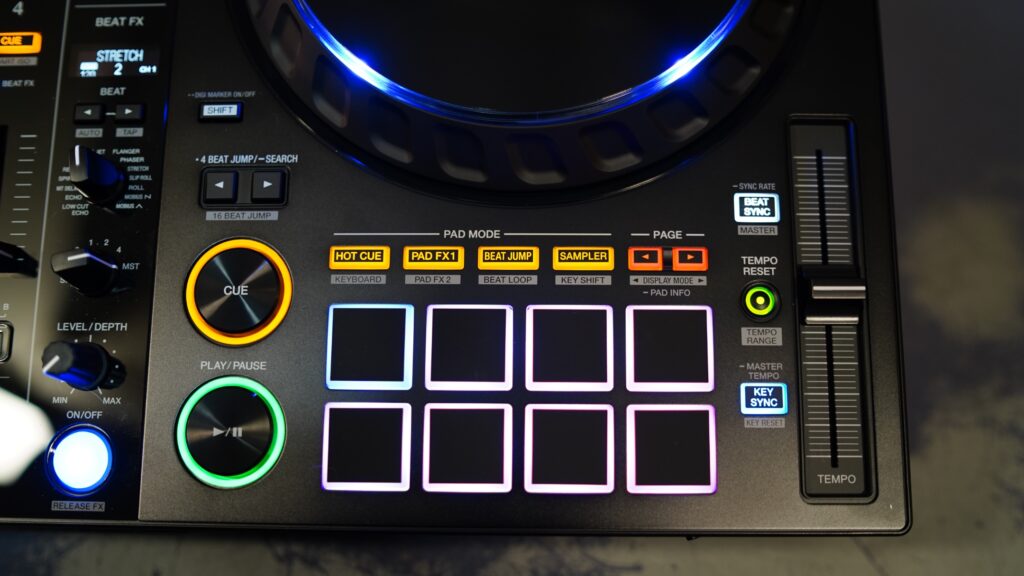
Your Turn
We put a lot of love into these reviews to serve you, our friends, and the global community of DJs.
If you found this useful, please support by
- Sharing this post on your socials (or texting it to another DJ who’ll benefit)
- Leaving a comment below with what you’re most excited about the Pioneer DDJ-FLX10 (or why it’s still not what you’re looking for)
- Subscribing to the Passionate DJ Podcast
- And if you are looking to pick up one of the Pioneer DDJ-FLX10 (or any other gear), consider purchasing from The DJ Hookup, who makes this possible. Ask us for below-advertised pricing and we’ll be happy to hook you up!
Looking to pick up a DDJ-FLX10 (or other dj gear)?
Let us hook you up.
Click here & ask us for discounts and best deals!
nobody is talking about sound quality. its better than my rx3. and very close to the a9. even the turntable inputs are really good. ANY controller with pads can use stems. and vdj has stems on lock. the flx 10 works great on vdj